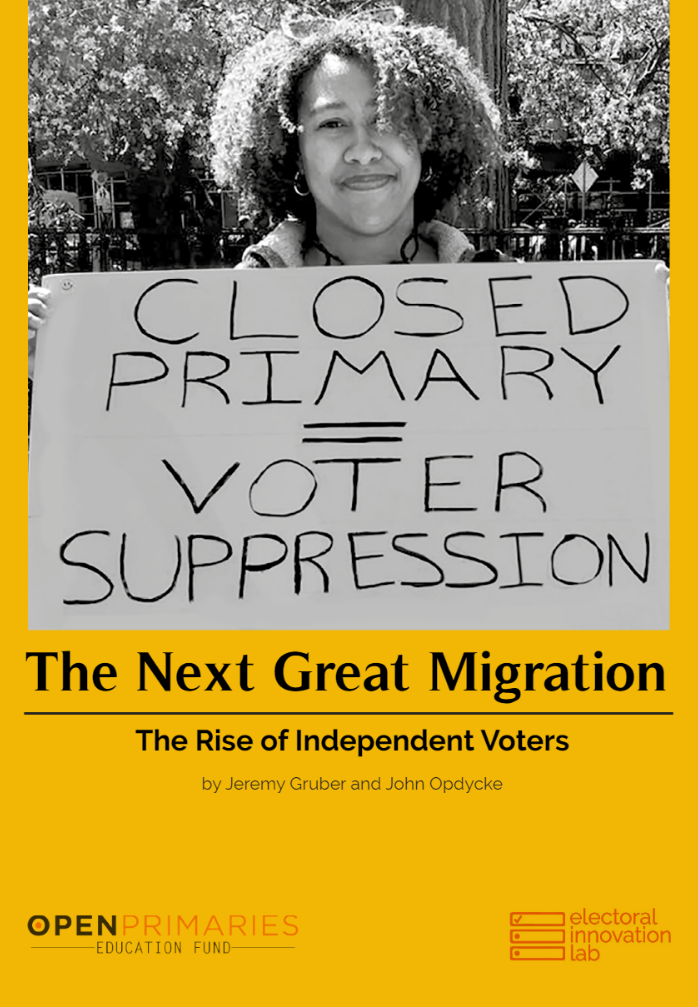Menu
INDEPENDENTS REPORT
Summary
We hope this report will stimulate inquiry, debate and scholarship on how best to structure our political process as growing numbers of Americans reject party affiliation.
- Thirty states combine voter registration with political party registration. Twenty states have nonpartisan voter registration.
- We analyzed the data in the thirty partisan voter registration states. We found party membership declining in almost every state, with independent voters currently constituting the largest or second largest group of registered voters in half the states in the country. With current rates of growth, that will soon include every state.
- Political scientists, analysts and pundits have dismissed this trend because they have focused solely on how independent voters vote.
- We demonstrate that the rise of independent voters is significant. Registered independent voters are subjected to legal, political and administrative bias and exclusion. We demonstrate that independents are afforded second-class status because they do not choose to enroll in a private political party, and that this matrix of legal/administrative restrictions harms these voters as well as our democratic process.
- We suggest three interrelated structural electoral reforms to account for the rise of independent voters.
- Eliminate party registration as a component of voter registration.
- Adopt nonpartisan primary elections.
- Restructure the Federal Election Commission.
- Finally, much more analytical research on this emerging trend is needed.


